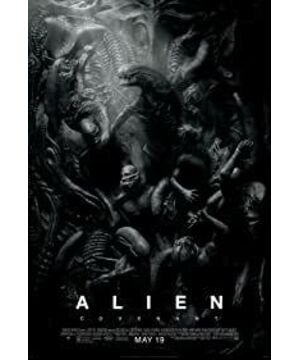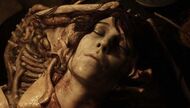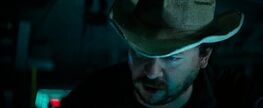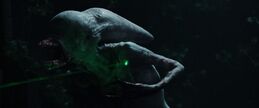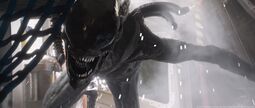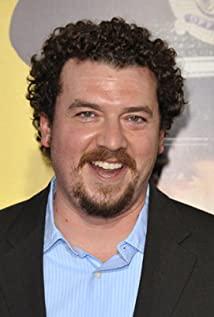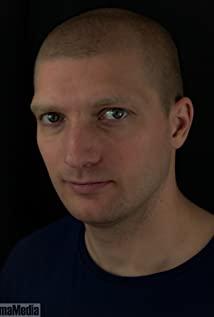This article first appeared in the NetEase cloud column landlord, Portal:
explore the "Alien" DNA code from music
before the summer season, the landlord of the most anticipated movie of Wonder Woman fact not beautiful, but "terrifying" profiled
Prior Tom's "The New Mummy" is also on, and suddenly wanted to make a classic thriller music collection, so there is the following
playlist The classic music in the thriller
has "Alien", "The Mummy", "Devil" Selected tracks from Terminator, Resident Evil, The Walking Dead, Jaws, Jurassic Park, The Ringer, The Grudge and Silent Hill. These are my personal favorite horror/thriller movies, and they are also very good musically.
Since the text involves a lot of music, you can listen to the songs directly by reading NetEase Cloud's column.
You can also open the playlist and read the text. The music in the playlist is in the same order as in the text. There are a lot of
atonal,
dissonant modern music in the Origin of Life: Cyborg Anti-Water horror film, creating a thrilling and tense atmosphere.
But the ambitious director Ridley Scott really wants to explore a series of ultimate propositions such as creation, the origin of human beings, and religion. This makes "Alien" destined to be more than just a B-horror. So her music is also very rich.
Let's warm up by listening to the more soothing music in the 3 movies, and feel the thrilling style of "Alien".
01. Life
This is the opening song of "Prometheus", about the origin of life.
An "engineer" from an alien planet traveled thousands of miles to Earth, drank a bowl of poisonous water, and shattered his bones. Like the mythical Pangu, we humans were created by sacrificing ourselves.
This tune also appeared in the "Alien. Contract" released this time. It is the melody played by David with a flute. And the life he wants to create is an alien.
02.
The two prequels of Wagner's "Rheingold" and "Alien" have a Genesis flavor. The beginning of "Prometheus" is that engineers create human beings, and the opening of "Contract" is that Wieland creates cyborgs. They talk in a pure world. This is the beginning of the whole story later.
Wieland, like Joe Booth, dominates the earth with high-tech companies and lives like a god. And his most outstanding creation is the biochemical man David. He gave David the ability to think and create independently. So from the beginning, David has been narcissistic, expressing his rebelliousness to his "father": I can live forever, but you can't.
Wieland was hit on the key, so the old man later sponsored archaeologists to go to distant planets to find the creator, in an attempt to obtain the secret of immortality.
Humanity's fear of death and the biochemical man's attempt to pursue freedom eventually led to the alien catastrophe.
In the "Contract", this "father and son" dialogue is carried out in a special literary style. The director posted three classic works in art history to the audience in one breath. They are Botticelli's famous painting "The Birth of Jesus", Michelangelo's sculpture "David", and Wagner's "Rhine Gold".
Jesus, we all know that he is the Son of God, the Son of God.
David is the king of Israel recorded in the Hebrew Bible (Old Testament) of Judaism. Around 1000 BC, after a series of battles, he unified Israel and made Jerusalem the capital. According to the New Testament, Jesus is a descendant of David. The biochemical man named himself "David" immediately after seeing the sculpture. Wolf's ambition should not be underestimated.
Wagner's "Rheingold" is the first of a four-part opera in the masterpiece "Ring of the Nibelung". The Ring tells the story of the gods in Norse mythology. In "The Gold of the Rhine", the lord of the gods, Wotan, commissioned giants to build ornate temples.
The piece of music referenced in the film depicts Wotan and his wife looking at their newly built new home, smug and full of the joy of conquering the world.
However, Wotan later paid the giant a ring made of Rhine gold. And it is similar to the ring in the movie "The Lord of the Rings", with a curse effect, so the tragedy begins. In the last opera, Ragnarok, the temple collapses and the gods perish.
The metaphors of these three religious myths are intriguing.
Jesus saved all beings but was forsaken by his people and was crucified. This happened exactly 2000 years ago. Some great gods have speculated that Jesus may be an alien creator who came to earth for sightseeing and observing the people's feelings. In the end, he was killed by the earthlings, which caused the aliens to be angry and decided to start a war and destroy mankind with a big killer.
As for the main god of northern Europe, he took the gold of the Rhine to poison the giants, but he was cursed and destroyed. This metaphor is better understood. Gods are alien engineers. Originally, they created black water in an attempt to destroy human beings, but they did not expect to be stolen by their "grandchildren" artificial humans, creating aliens, and destroying the "gods" of humans and engineers. .
Therefore, what Director Scott loves is the love and killing between the creator and the created.
Every level of life is obsessed with creating a new one. At the end of creation, the "perfect" ultimate killer finally appeared, eating all life back. This kind of "father-killing"-style reincarnation has a taste of ancient Greek tragedy.
03. Main Title
Title music from Alien 1 in 1979. Originally, this should also be the opening song of "Alien 1".
She later became a classic theme throughout the series. The tune contains several musical motives that are used repeatedly, like the alien DNA code, inherited and mutated in each sequel or prequel. This song will be analyzed in detail below.
Cosmic Killer · Frightening Beauty
Let's go back to the first "Alien" 38 years ago. When Alien 1 opens, we hear music like this:
04. The Passage is
like a barren cemetery with ghosts floating around. In this opening music, for a full 5 minutes, it is completely empty footage of no one. The extremely slow-moving footage shows us a dark, icy, lifeless universe in which the cargo spacecraft Nostromo floats all by itself, and subtitles type out its series of messages.
It should be said that this piece of music created a creepy atmosphere very well at the beginning. Jerry Goldsmith used the Shofar, the ancient Hebrew horn, to make a whimper like a ghost.
This piece, however, was not created by the composer for the title in the first place. In fact, Goldsmith's original intention was to use that "Main Title" to accompany the opening.
Apparently, the title track is much milder than The Passage, which was written later, and after a string of dissonances at the beginning, it falls into silence, and then at 35 seconds, the trumpet solo takes out the main melody.
This single-line melody symbolizes the lonely spaceship sailing in the vast universe, and the loneliness of the last and only survivor, Ripley, after escaping and drifting away. This has become a recurring story throughout the Alien series. So this melody appears in every Alien.
For example, in "Contract", we can hear this song
05. Planet 4
and this song
06. Friend From The Past in "Prometheus"
Humans traveled thousands of miles to the LV-426 planet to find the creator, and ended up there All I see is a pile of corpses, and an alien engineer who has been dormant for 2000 years. It really is "friends from the past", and the music comes from the past.
However, the theme doesn't sound "horrifying", but rather lyrical. Why did Goldsmith write this? He said this in the interview:
I have always believed that the universe is unknown, not pure horror, but mysterious, with a touch of romance. I think the same goes for Alien. I was frightened by the alien, and then pulled away and felt its beauty again. So, when I created Alien, I wanted to start with a romantic and lyrical way, and then add horror as the story goes on.
Is it also beautiful to have an alien with a drooling drool coming out of her chest?
Let's review the birth process of the alien monster.
Since King Kong and Godzilla created the history of monster movies, creating a unique and breathtaking monster is the horror core of this type of movie. Frankstein and Jaws are classic monsters before Alien. The alien image comes from the work "Necronomicon" (Necronomicon) created by Swiss surrealist artist HRGiger in the 1970s.
This dark, eerie, and strongly sexually suggestive aesthetic style in Giger's works immediately caught the eye of director Scott. This is exactly the monster he's dreamed of! So the director found him and designed the visual style of the entire movie for Alien, including the alien's image, scenes, props and so on. Thus, the best monster design in horror movie history turned out. Giger became famous all over the world and won an Oscar. The creation of this genius is indeed the pinnacle.
Alien engineers and spaceships were designed that year. There is a fertility cult in every work.
From these designs, we can feel the dark horror and cruel beauty of the whole movie.
So, the composer's romantic idea is actually pretty good. However, the director disagreed. Scott needs the opening scene to give me the creeps! Goldsmith then reluctantly wrote the opening song that followed.
It's not over yet. What made him even more irritated was that the director didn't even use his ending credits, replacing it with Howrd Hanson's "Second Symphony." This is embarrassing.
07. The
first half of End Title Goldsmith's ending song is basically the same as that of Main Tiltle, and the second half changes the theme of the wandering universe.
The most unbearable thing for Goldsmith is that there is a plot in the middle of an alien dripping strong acid blood. The composer specially wrote a piece of music "Acid Test", which perfectly matches the picture.
08. The acid test
turned out that the director didn't use it either, but instead took an excerpt from one of the composer's previous films, "Floyd". In fact, this piece of music is a temporary soundtrack that the editor found when editing. By the time the composer has written the official soundtrack, the director and editor may have been brainwashed by the temporary music.
This time, the composer and director have completely broken up. You know, Jerry Goldsmith was already a famous composer at the time. And Ridley. Scott had only made one feature film before, and it was not "Thor" at that time. But who is called a master? Alien made him famous. Later, a series of classic works such as "Blade Runner", "The End of the Road" and "Gladiator" were filmed.
Sleep. Crew and Alien
09. Hyper Sleep
Another music that runs through the entire series in Alien 1 is the theme of sleep.
And its full version has appeared in Main Tilte. It begins with a timpani strike at 2:45 seconds, like a death knell. The strings are laid out in the bass, and the brass roars with dissonant chords every now and then. This timpani + brass roar is also the iconic music in the Alien series. Then, the woodwinds blew out the famous sleepy motive at 3:05 seconds.
Goldsmith originally intended to use this theme when the 7 crew members woke up from their dormant pods.
The awakening of the dormant warehouse has also become a necessary stalk in every episode of the entire "Alien" series. With the advancement of the times, the visual effects of the dormant warehouse have become more and more high-tech.
In the prequel "Prometheus", which restarted more than 30 years later, the dormant warehouse looks very futuristic. In fact, the plot of "Pu" happened before "Alien 1".
This sleep motivation also appeared when the Alien Egg appeared. In the absence of a living host, the xenomorphs have been dormant in eggs, just like humans dormant in dormant chambers.
This sleepy theme has appeared in the follow-up "Alien", sometimes slightly deformed. For example, the title music in Alien 2.
10. Main Title (by James Horner)
The structure of this song is similar to the title song in Alien 1. The first half is the subject of Alien 2, and by 2:35 seconds a variant of the sleepy motive emerges, turning into a switch between the two inversions of the Eb chord. However, the sound effect is still very similar to the original sleep motivation. Composer is James Horner, composer of "Titanic".
11. After Entering the Ship
, there are many scenes that are calm on the surface, but undercurrents are surging, and contain murderous intentions. This sleeping theme can also be used. For example, "Entering the ship" in "Alien 4".
12 The Covenant The Covenant
theme in The Covenant can also be seen as a variant of the sleepy motive.
Because on this immigrant spacecraft, in addition to the crew, there are thousands of frozen dormant human embryos, which are ready to colonize alien planets.
Music Code. The DNA of Alien Mutation
Throughout the "Alien" series, there are many changes in the shape of the alien. But it remains the same, and each alien form has very strong religious metaphors and sexual implications. Correspondingly, the music that symbolizes aliens in each episode is also changing, but it is vaguely related.
13 Small Beginnings
The source of all evil is black water. David said: Big things have small beginnings The beginning of
the piece is a bit like "Life", but on a melancholy minor key. The lyricism didn't last long before the painting style changed. At the beginning of 35 seconds, the sin theme of Black Water appeared: the cello played a devious melody in the bass area.
There are only 3 notes that make up this blackwater motive, and most of the time it's just the back and forth between the two notes of Ab and B. The subsequent development is all the deformation of this motive, the modulation. In fact, there is nothing better than music to reflect the truth of "Big things have small beginnings".
Later, the motive for life came back, but it became more gloomy and desolate, like being polluted and mutated by black water.
In the alien spaceship of "Pu", after the black water infected the small earthworm, it turned into a snake-shaped monster. The image of the serpent appears in many religious prophecies. In the Bible, it was the serpent who lured Adam and Eve to eat the forbidden fruit. In the movie, when the "snake" did not open its "mouth", it looked like a male indescribable part. After opening the "mouth", it shows the characteristics of a certain part of a woman.
14. David
Blackwater's motive was also used to depict the android David. But this piece changes the orchestration and adds an electronic synth tone that embodies the essence of David's non-organic.
15.Spores came
to "Contract", the original form of the alien is spore, listening to this "Spores"
can actually be regarded as another variant of the sleeping motive. The special feature of this piece is the processing of the timbre, so that the illusory and ghost-like qualities of the spores are reflected.
16. Grass Attack
We hear this "Grass Attack" in the grass encounter at the back. In the first half of the song's simmering atmosphere, the spore's motive floats out (at 1:00) in the tumultuous foreshadowing of the strings, but then disappears. At 1:06 seconds, the sleep motive appears. It wasn't until the end that the intense music that rendered the battle came along.
Check out Alien 1. The appearance of alien eggs and face-hugging bugs is the first horror point in Alien 1. In the 30 minutes before that, the film had been in a very dull and depressing rhythm, until the face-hugging bug flew out of the eggshell and wrapped the human face, causing shock.
40 years ago, this was an absolute nightmare for viewers. Later, it became a classic stalk of the "Alien" series.
Goldsmith wrote special songs for Alien Egg and Face Hugger.
17 . The Eggs
18 . The Face Hugger The
composer used some unconventional instruments in order to describe the strangeness of the alien, such as the Serpent (serpentine tuba), a woodwind instrument in the Middle Ages. This instrument looks quite "alien".
There are also strings that use a lot of unconventional playing techniques to create a creepy tone that sounds like a lot of bugs crawling around.
But unfortunately, this Face Hugger did not appear in the movie.
The face-hugging bug's design is also typically hermaphrodite. The abdomen resembles a female part. The tail also reflects the characteristics of males. After the face-hugging worm slams the face, it will parasitize the embryos into the human body, feeling that it is raping the host, making them "pregnant", and finally bursting out of the chest. This process is very tasteful.
In fact, each form of Alien's attack is very similar to the setting of some hardcore porn. It's just that men are often attacked, and women are used to nurture new breeds.
And the image of mature aliens is even more self-evident. It is said that what was originally spit out of the mouth was also indescribable, but was later harmonized into a tooth in a tooth.
19. Main Title (by John Frizzell) In
Alien 4, the alien gene is further combined with humans, and finally becomes a viviparous monster. This design is really not beautiful. However, the music of Alien 4 is still very classic.
The heroine Ripley and Alien have changed a lot in this episode, mixing each other's genes, so the music of "Alien 4" has also become different. We heard the band play arpeggios slowly, as if stirring a thick pot of porridge.
There is also a song at the back, which is a picture of the heroine lying in a pile of aliens without a name.
20. Post Op
Fight. The Woman Who Survived
Scott's Alien was one of the first films to feature a heroic and witty female protagonist. From the first part, this series is always a spaceship that finds an alien in space, then the whole group is destroyed, the heroine and the alien battle wits and courage, and finally survive.
Sigourney Weaver (the female scientist in "Avatar"), the heroine of Ripley in episodes 1-4 of "Alien", has a domineering and neutral beauty in itself.
And James Cameron made her a heroine in Alien 2. Listening to this song "Ripley's Rescue", you can imagine the bloody picture of the heroine and the alien fighting for 300 rounds.
21. Ripley's Rescue
Ripley was dormant for more than 50 years before being discovered by fellow Earth compatriots and returned to Earth. However, she was once again sent into the depths of the universe to track down a colonized planet that had suddenly lost contact. There, the rescue team discovered that the only survivor was a little girl.
Although inheriting the dark style of "Alien 1", Cameron has injected a very warm and humanized emotional element into this episode. Ripley and the child meet by chance and are in love with the mother and daughter. The final climax of the film is that the heroine accidentally broke into the ovary of the alien queen in order to save the child. The heroine started a killing spree and burned the alien eggs all at once. This caused the Alien Queen to run wild. In the end, it became a one-on-one duel between the two "mothers".
This is the prototype of the mechanical equipment in "Avatar". The powerful heroine defeated the Alien Queen with this.
Cameron is indeed the most gentle director. At the end of this episode, he gave the heroine a boyfriend and a child, and the family of three hid in the dormant warehouse happily.
As a result, this happy ending was subverted at the beginning of "Alien 3". Both the child and the male ticket were broken to death. Ripley himself was parasitized. "Alien 3" is the most dreary episode in the entire series, but the scene at the end of the film where the heroine and the alien who burst out of the chest are still shocking.
It must be accompanied by music 22 . You can still have a life
"Alien 4" is at the end of the game, but because Ripley and Alien have mixed genes and become a more powerful hybrid superman, there is a new point of view. The biochemical people in the first 3 episodes were all male, but this episode was played by the stunning beauty Winona Ryder.
In the 1990s, Winona was still at the peak of her appearance. She and Sigourney Weaver's shou and gong's collocation complement each other, and the sense of CP is bursting.
Without Sigourney Weaver, the heroines of Alien's prequels "Pop" and "Covenant" would have a much weaker presence. In fact, Scott's focus has obviously returned to men, and it is still human beings. David, played by Fa Shark, is the real protagonist of the prequel.
However, it is still women who are fighting the aliens. In "Prometheus", the female protagonist Xiao's caesarean section is quite shocking.
Listen to 23. Hello Mommy, it feels like the alien is really about to crawl out of his stomach.
What did David do to Shaw? Did the alien queen come out of Xiao's stomach? Have to wait for the final episode of the prequel to be revealed.
For more exciting content, please pay attention to the landlord's WeChat public account
View more about Alien: Covenant reviews


